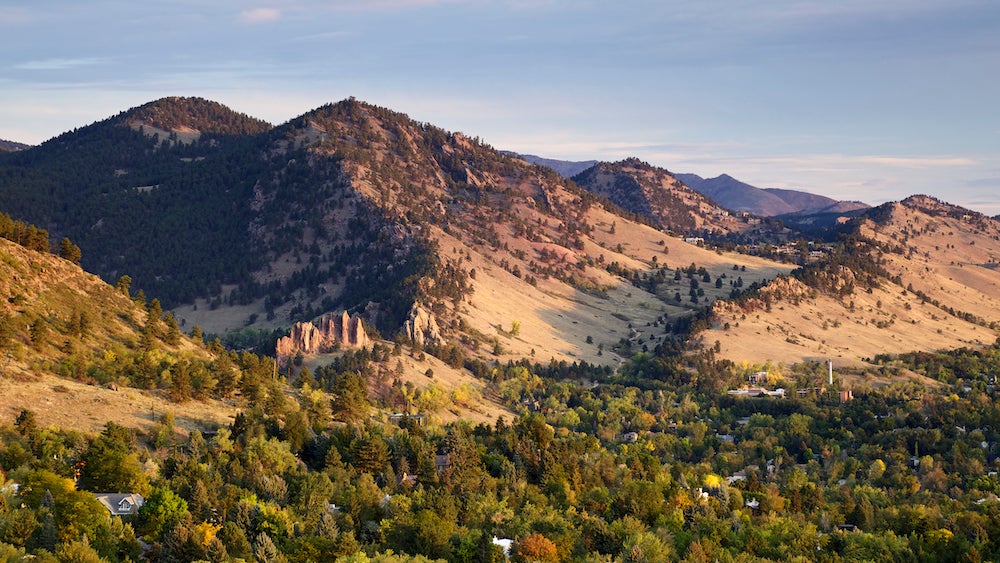The Joy—and Struggle—of Mindful Hiking

(Photo: beklaus via Getty Images)
About halfway up the East Ridge Trail on Mt. Sanitas, in Boulder, Colorado, the path squeezes through a gap between car-size boulders. The opening is so narrow you have to turn sideways to pass through. The rock is cut at an awkward angle—you need to take a sharp left and then a rightgoing up—so it’s easy to scrape your knuckles or knees if you try to shoot the gap too fast. I’ve left some skin there when I wasn’t paying attention.
I know the spot well because 6,863-foot Sanitas is just a mile from my house. A local hike like this keeps my legs and spirit fresh, so I do it a couple of times a week. I start on the Goat Trail, a short path that ascends a steep-sided ravine where I often see deer. Above that, there’s a meadow that changes with the seasons, from deep green to wildflower-speckled to golden to snow-buried white. Then the path becomes watch-your-step rocky as it ascends the East Ridge, opening up to bird’s-eye views across Boulder and up and down the Front Range. All of which is to say that there are plenty of sights to keep a hiker occupied.
The problem is, I’ve made the journey so many times now that I don’t focus on the path any longer. It’s easy to forget where I am, easy to breeze past the scenery and get lost in thoughts—the normal stuff, work, family, weekend plans. My feet know where to go, so my mind wanders.
I didn’t think about this too much until I learned about Ryojun Shionuma . The Buddhist monk puts the toughest thru-hikers to shame. He scaled Japan’s Mt. Omine—nearly 30 miles round-trip—every day from May to September for nine years in a row, completing the journey 1,000 times in an ancient ritual that promised pain, suffering, and, if he finished it, enlightenment.
You can’t read about Shionuma’s feat without being astounded. But endurance is only part of the story. What captivated my attention was his belief that hiking up and down a mountain, day after day and year after year, would shape his mind more than his body. And it turns out, science backs him up. New research suggests that meditation combined with exercise has a multiplying effect, delivering a one-two punch ofpsychological benefits—lifting mood, improving concentration, and more.
Good news for hikers, right? Sure, but that’s what made me question my time on Mt. Sanitas. After nine years in Boulder, with about 100 ascents a year, I’m closing in on my own 1,000-day challenge. But my mind was wandering when it should have been growing.
Fortunately, it’s not too late to start over and try to bring a little mindfulness to the trail. On my most recent trip up Sanitas, I tried to adopt Shionuma’s version of walking meditation, repeating his mantra on every rocky step. I fell into an easy rhythm for a while, but I can’t say it was a complete success. With my focus turned inward, the outside world intruded—and I learned that I still better pay attention when squeezing through that gap halfway up.
But that’s OK, I have 999 more hikes to get it right.